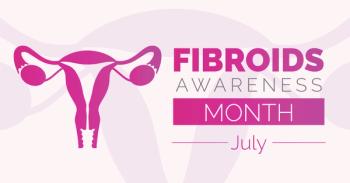
Safety and Efficacy of GnRH Antagonists in Uterine Fibroid Treatment
Jessica A. Shepherd, MD, MBA, FACOG, and Mauricio Abrão, MD, assess the use of FDA-approved GnRH antagonists in clinical practice.
Episodes in this series

Mauricio Abrão, MD: We can go in-depth about the individual agents that we have. We have a chance to participate in the trials of both elagolix [Orilissa] and relugolix [Orgovyx] for endometriosis. But I want to hear your thoughts, Jessica, about the indication of these agents for fibroids.
Jessica A. Shepherd, MD, MBA, FACOG: You named the 2 FDA [Food and Drug Administration]-approved GnRH [gonadotropin-releasing hormone] antagonists, elagolix and relugolix, and how they’re able to rapidly have a reversible suppression of your ovarian sex hormones. The primary outcomes for both studies were looking at reducing fibroid-associated heavy bleeding. I’ll start out with elagolix. Both studies were looking at women who underwent randomized places, but the criteria was the important part.
This was a study looking from a medication standpoint on something that in the past we’ve typically used from a contraceptive standpoint. The primary end point was bleeding decrease over the course of time that they were in the studies, as well as having less than 80 mL, which we typically use as our clinical criterium for menorrhagia, and looking at patients who met both of those criteria. That was important. Because when we think of patients who come in with heavy bleeding, there are different parameters as far as how much you bleed vs how much bleeding we’re going to be able to decrease over time. It was hard for us to make that judgment using hormonal contraceptives and birth control methods in the past because it wasn’t necessarily made for that.
In addition to what we discussed before from a GnRH agonist standpoint is the hyperestrogenic effect that these medications have. Patients aren’t going to have as significant adverse effects as they experienced in the past. This is groundbreaking for patients as far as how we’re able to integrate both of these individual agents. Looking at the safety and efficacy from the [Elaris] UF-1 and UF-2 trials of elagolix, there was a significant reduction in heavy menstrual bleeding.
When we look at the adverse effect profile, from a safety and efficacy standpoint, patients who were in UF-1 and UF-2 didn’t have a significant amount of safety profiles that I would be concerned about in order to recommend that for my patient. This is allowing us to have even more tools in our toolbox when patients come in with heavy menstrual bleeding. This is where our research needs to be taking us, where we have more impactful medications that are going to give us medical therapies for our patients that have quick onset.
I’ve had real-world observations by using these agents in my practice. For example, early on during the pandemic, surgery was decreased significantly because ORs [operating rooms] were closed for elective procedures and being able to put patients on this medication in order to get them to a point where they would need surgery. I’ve even had patients who had such a significant impact of the decrease in their bleeding that they were like, “This is going to be my method of choice for what I’d like to choose for myself for an option for decreasing heavy bleeding.” That was one of the things where I want to get with patient care and offer many options and have patients be able to choose what’s best for them and their journey. This is where we’re starting to go and hopefully even getting better at it.
To contrast that with relugolix, what was the significance of that being evaluated when we have a combination of estradiol 1 mg and norethindrone acetate 0.5 mg in the LIBERTY trials? What did you see throughout those trials that you felt were impactful for patients as far as primary outcomes and even adverse effects?
Mauricio Abrão, MD: There’s an improvement of the adverse effects, but I don’t know if we can call these effects caused by the GnRH antagonist adverse effects because they’re effects of the reduction of the estrogens. These effects that we’re talking about, including hot flashes, occur because we bring the patient to the menopause status. When we add estradiol and norethindrone acetate, the reduction of the adverse effects is enormous. It doesn’t seem to reduce the effect of the medication in terms of the treatment of the fibroids. This is a good option as well. Mainly when we talk about reduction of the bleeding and the pain as well, this is an important thing that we must consider for both relugolix and elagolix.
Transcript Edited for Clarity
Newsletter
Get the latest clinical updates, case studies, and expert commentary in obstetric and gynecologic care. Sign up now to stay informed.














